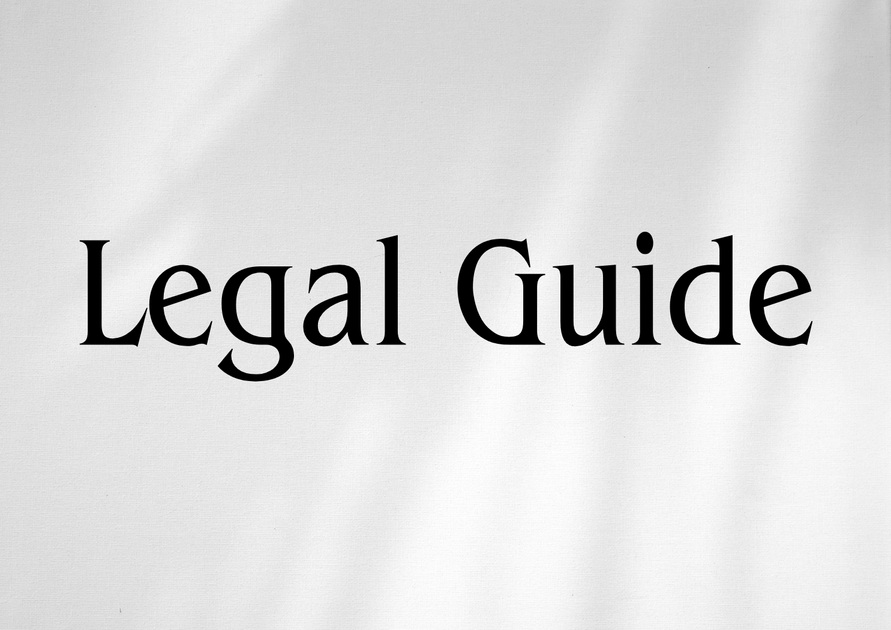Introduction
In a region where international connectivity is pivotal to economic growth, the legal framework governing civil aviation in the Kingdom of Saudi Arabia (KSA) commands significant attention. For UAE-based enterprises, executives, and legal practitioners, understanding these regulations is material to managing cross-border operations, ensuring compliance, and leveraging opportunities in aviation, trade, and tourism. With the Saudi aviation sector undergoing transformative regulatory updates to support Vision 2030, legal professionals and businesses in the UAE must stay informed and proactive.
This advisory provides an in-depth analysis of the Kingdom’s civil aviation legal environment, focusing on the interplay with UAE regulations and how recent changes reshape commercial and legal practices. Relying on verified sources—such as the Saudi General Authority of Civil Aviation (GACA), the UAE Ministry of Justice, and official government portals—this article delivers strategic insights, compliance guidance, and practical recommendations that empower decision-makers to respond confidently to legal developments.
Given growing air travel between the UAE and Saudi Arabia, the emergence of new air service agreements, and evolving compliance obligations, it is crucial for organizations to realign their risk management and operational strategies in light of these changes. This is especially pertinent in the context of UAE law 2025 updates and their implications for regional aviation compliance.
Table of Contents
- Regulatory Overview and Governance Structures
- Key Legislation Impacting Civil Aviation in Saudi Arabia
- Comparative Analysis: Saudi and UAE Civil Aviation Law
- Compliance Risks and Strategies for UAE-Oriented Businesses
- Case Studies: Practical Implications and Enforcement Scenarios
- Future Trends and Best Practice Recommendations
- Conclusion: Towards Harmonized Regional Aviation Compliance
Regulatory Overview and Governance Structures
Saudi General Authority of Civil Aviation (GACA) – Central Regulator
The backbone of Saudi Arabia’s civil aviation sector is the General Authority of Civil Aviation (GACA), which formulates policy, statutes, and enforcement protocols. Established under Royal Decree No. (M/44), GACA wields broad authority—from airspace management and airport oversight to licensing, safety, and navigation. GACA’s regulatory foundation aligns with international conventions, notably the Chicago Convention (1944) and ICAO guidelines, to which Saudi Arabia and the UAE are both signatories.
Institutional Framework and Oversight Mechanisms
- GACA Board: Determines strategic direction, air navigation standards, and international bilateral agreements.
- Minister of Transport and Logistics Services: Supervises aviation policy development and execution within the broader Vision 2030 context.
- Airport Operators (Government & Private): Govern ground handling, safety compliance, and passenger services under GACA’s licensure regime.
- Coordination Councils: Foster cooperation with regional counterparts—particularly the UAE’s General Civil Aviation Authority for cross-border regulation and dispute resolution.
The UAE maintains a similar structure, led by its General Civil Aviation Authority and coordinated through the Ministry of Justice and Cabinet resolutions. This institutional symmetry allows both nations to harmonise compliance frameworks and aviation protocols.
Key Legislation Impacting Civil Aviation in Saudi Arabia
GACA Law and Implementing Regulations
Saudi Arabia’s legislative underpinnings are codified in the General Authority of Civil Aviation Law (Royal Decree No. M/44 of 2005, amended variously through 2023). The law governs:
- Airspace Sovereignty and Use: Restrictions on military and civil flights, with exceptions narrowly construed and subject to explicit GACA authorization (as per Article 5 and Article 12).
- Licensing and Certification: All aircraft, operators, and personnel must secure GACA approval prior to operation. Licenses are granted based on strict criteria for safety, environmental impact, and international compatibility.
- Aircraft Registration: Mandatory registration of aircraft in Saudi Arabia, with the Registry maintained as per ICAO Annex 7 standards.
- Market Access/Carrier Rights: Regulation of domestic and foreign carriers’ rights to operate scheduled and chartered flights, subject to GACA vetting and bilateral air services agreements.
- Safety and Security: Alignment with SAASCO standards, periodic audits, mandatory reporting of incidents, and security screening requirements consonant with IATA/ICAO best practices.
- Consumer Protection: Obligations concerning delayed flights, lost baggage, and passenger rights (as elaborated in GACA’s Consumer Protection Regulations 2022).
- Sanctions and Penalties: A comprehensive regime of fines, license suspensions, and criminal liability for serious breaches (detailed in the Enforcement Regulation 2023 update).
International and Bilateral Treaties
- Chicago Convention (1944): Both Saudi Arabia and the UAE are parties, requiring compliance with core ICAO standards in safety, airworthiness, navigation, and accident investigations.
- Bilateral Air Services Agreements: Saudi and UAE authorities negotiate mutual rights for airlines, fostering liberalization while preserving national regulatory prerogatives.
Other Key Instruments
- Saudi Civil Aviation Law Implementation Regulations (2021, 2023 updates): These updates modernize the sector by introducing e-licencing, digital transactions, and new classes of air operator certificates.
- Anti-Smuggling and Customs Law (Royal Decree No. M/41): Applied to air cargo and transit operations at Saudi airports.
- Data Protection and Cybersecurity Mandates: Ensuring the confidentiality and integrity of flight and passenger data, with substantial penalties for data breaches as updated in the 2023 amendments.
Visual: Saudi Civil Aviation Governance Structure
Suggestion: Include a diagram showing the relationship between GACA, Ministry of Transport, airport operators, and international regulators.
Comparative Analysis: Saudi and UAE Civil Aviation Law
Core Legal Frameworks Compared
The regulatory alignment between Saudi and UAE civil aviation is robust, each anchored by a specialized authority (GACA vs GCAA) and harmonized with global standards. Recent updates, however, introduce nuanced differences, especially regarding e-governance, data security, and enforcement approaches.
| Feature | Saudi Arabia | UAE (Federal Law No. 20 of 1991, amended 2025) |
|---|---|---|
| Principal Regulator | GACA | GCAA |
| Primary Law | Civil Aviation Law (M/44), as amended 2023 | Federal Civil Aviation Law (No. 20 of 1991, updated by Federal Decree UAE 2025) |
| Licencing | Enhanced e-licensing portal (post 2023) | Transitioning to unified digital licensing (per 2025 roadmap) |
| Passenger Rights | Detailed under Consumer Protection Regulations 2022 | Comprehensive; harmonized with EU261 benchmarks (from 2025 update) |
| Sanctions | Escalating fines, public disclosure of non-compliance | Administrative penalties, with mandatory remediation plans |
| Data Privacy | Obligatory under 2023 cybersecurity amendments | Integrated with UAE Data Protection Law (Federal Decree UAE 2021, with 2025 augmentations) |
Visual: Penalty Comparison Chart
Suggestion: Feature a chart comparing maximum penalties for regulatory violations across both jurisdictions.
New vs Old Law Provisions in Saudi Civil Aviation Legislation
| Topic | Previous Framework | Reforms (2021–2023) |
|---|---|---|
| Digital Licensing | Manual submission, slow processes | Automated e-portals, expedited vetting |
| Enforcement | Discretionary fines, limited disclosure | Higher transparency, stricter sanctions, naming of violators |
| Passenger Rights | Limited, vague obligations | Detailed compensation, clearer complaint procedures |
| Data Protection | General confidentiality | Stringent cybersecurity disclosures, mandatory breach reporting |
Compliance Risks and Strategies for UAE-Oriented Businesses
Common Pitfalls in Cross-Border Aviation Operations
- Licensing Lapses: Failure to obtain or renew GACA certification can result in flight bans and steep fines.
- Non-Alignment of Data Handling: Differential data reporting regimes may trigger sanctions under Saudi cybersecurity mandates, despite UAE compliance.
- Operational Non-Compliance: Misunderstanding bilateral air services agreements or passenger rights can provoke regulatory action, especially after service disruptions.
- Customs and Smuggling Concerns: Cross-border cargo flights are especially vulnerable to customs scrutiny if cargo documentation and tracking aren’t aligned between GACA and UAE customs authorities.
Risk Mitigation: Compliance Checklist
| Step | Recommended Action |
|---|---|
| Licensing | Verify all GACA and GCAA certifications; utilize digital portals for timely renewals. |
| Documentation | Harmonize aircraft manuals, passenger manifests, and maintenance logs to meet both jurisdictions’ requirements. |
| Incident Reporting | Establish a central reporting protocol that satisfies both GACA and UAE mandatory timelines. |
| Training | Update staff on changes in consumer protection and data privacy regulations (annual refreshers recommended). |
| Data Security | Appoint Data Protection Officers responsible for breach management and compliance disclosures in both states. |
Visual: Cross-Border Aviation Compliance Flow Diagram
Suggestion: Insert a workflow diagram illustrating steps required for lawful operation of UAE-registered aircraft in Saudi airspace.
Case Studies: Practical Implications and Enforcement Scenarios
Case Study 1: UAE Airline Operating Scheduled Services to Riyadh
A major UAE-based carrier obtained GACA approval to operate scheduled flights between Dubai and Riyadh. Mid-2023, the airline experienced a cybersecurity breach affecting passenger data on its Riyadh-Dubai route. Saudi regulators, citing the 2023 cybersecurity amendments, imposed a penalty and demanded immediate remedial action, even though the breach originated from UAE-based servers. This case underscores the need for consistent cross-border cybersecurity compliance, not just single-jurisdiction adherence.
Case Study 2: Ground Handling Joint Venture at King Abdulaziz Airport
A UAE-Saudi joint venture set up a ground handling company at Jeddah’s King Abdulaziz Airport. GACA’s new e-licensing rules streamlined their permit process, but an incomplete safety audit almost derailed commencement. Through prompt coordination with UAE lawyers, remedial training, and submission of updated manuals, the JV achieved compliance—evidencing the value of proactive legal due diligence and real-time monitoring of regulatory changes.
Hypothetical Example: Non-Compliance with Passenger Rights Provisions
Suppose a UAE-based charter company fails to deliver timely compensation to passengers following flight cancellations in Saudi Arabia. Under GACA’s revised Consumer Protection Regulations, the company could face substantial fines and a temporary suspension of its Saudi operations, with public disclosure of the infraction impacting its regional reputation.
Future Trends and Best Practice Recommendations
Regional Harmonization and Expansion
Both Saudi and Emirati regulators are actively working towards regulatory convergence, enhancing interoperability in safety, data privacy, and consumer protection guidelines. Initiatives such as the GCC Unified Air Traffic Management Plan will further streamline compliance obligations for regional operators.
Implications for UAE Law 2025 Updates
The anticipated Federal Decree UAE 2025 will cement digital transformation in aviation processes, augmenting passport and customs automation, and embedding advanced data protection mandates. For UAE enterprises targeting the Saudi market, integrating these compliance elements at an early stage ensures seamless adaptation once GCC-wide standards are enacted.
Best Practice Checklist for UAE Businesses Engaged in Saudi Aviation
- Monitor GACA circulars and implementation guidelines—immediate action required for each major regulatory shift.
- Engage UAE aviation counsel for joint compliance reviews, especially when negotiating bilateral or airline agreements.
- Implement dual-jurisdiction compliance management systems, ensuring consistent policies in both countries.
- Schedule annual legal audits covering data protection, passenger rights, and customs compliance.
- Invest in digital upskilling for legal and compliance teams to utilize e-licensing and digital regulatory submissions fully.
Conclusion: Towards Harmonized Regional Aviation Compliance
Saudi Arabia’s evolving civil aviation legal framework represents both a challenge and an opportunity for UAE-based businesses and their advisors. As regulatory reforms accelerate to match Vision 2030’s ambitions and new UAE law 2025 updates are poised for implementation, organizations must embrace a proactive approach grounded in multi-jurisdictional expertise. The convergence of best practices in licensing, data handling, passenger rights, and operational safety will define future success for cross-border aviation stakeholders.
UAE enterprises are urged to maintain vigilance for ongoing legal shifts—through partnerships with experienced legal counsel, robust compliance monitoring, and a commitment to digital innovation. By anticipating legal trends and realigning business strategies accordingly, UAE businesses can seize growth opportunities, minimize regulatory risk, and contribute to the region’s leadership in global civil aviation.




